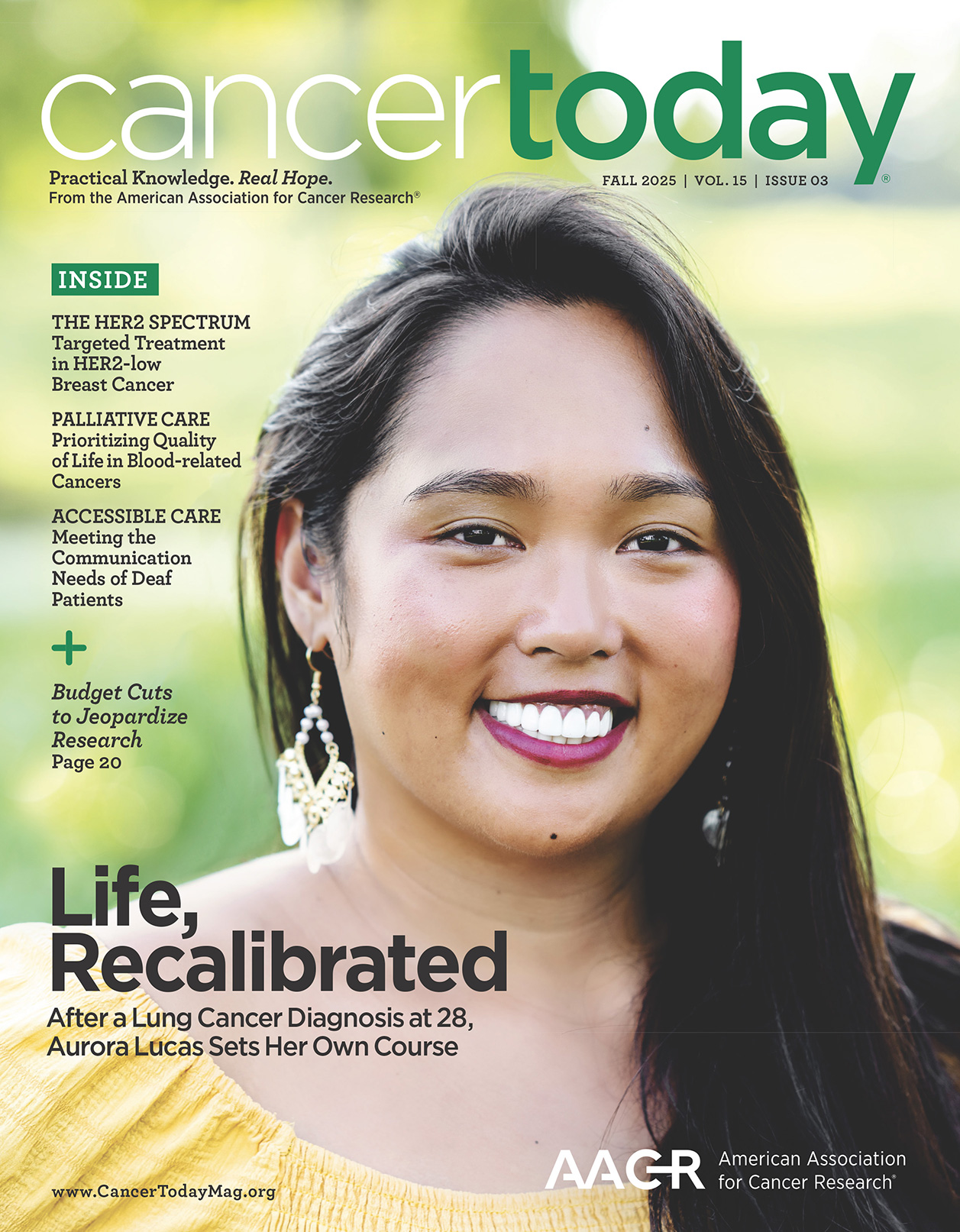RESULTS FROM LARGE RANDOMIZED CLINICAL TRIALS are necessary to demonstrate the safety and effectiveness of new drugs and other therapies that guide treatment approvals and recommendations. But clinical trials are highly choreographed treatment regimens among a select group of patients. How applicable are clinical trial results to patients who receive those treatments in their doctor’s offices? A study presented at the American Society of Hematology Annual Meeting and Exposition on Dec. 6, 2023, set to find out.
The Canadian study compared 3,951 patients with multiple myeloma who received treatment in real-world settings from January 2007 to December 2020 with patients who participated in randomized controlled trials for seven standard-of-care multiple myeloma regimens. They included two drugs for newly diagnosed transplant-ineligible patients and five drug regimens for patients with relapsed multiple myeloma. Real-world data were collected from the Institute for Clinical Evaluative Sciences, a database containing more than 13 million health records in the publicly funded health care system in Ontario.
The pooled results found that real-world patients with multiple myeloma had 44% worse progression-free survival, which refers to the time from randomization or the initiation of treatment to when the disease progresses or to death, compared with patients receiving treatment in the clinical trials. Real-world patients also experienced 75% worse overall survival compared with clinical trial patients. Only one drug regimen (pomalidomide with dexamethasone for relapsed multiple myeloma) showed a trend towards performing better in the real world compared with randomized clinical trials.
“The results of this study aren’t surprising,” says Shaji Kumar, a hematologist with the Mayo Clinic Comprehensive Cancer Center in Rochester, Minnesota, who was among the study’s research team. “We have always known that patients in clinical trials are a select group and aren’t going to truly be reflective of what’s going on in the real-world patient population. But it was unclear until now what the gap looked like,” Kumar says.
Only 3% to 5% of eligible patients with cancer enroll in clinical trials. “That’s one variable that could potentially affect the generalizability of clinical trial results,” Kumar says. Clinical trial patients tend to be a select group who fit strict inclusion criteria, such as having good organ function, no significant comorbidities (other health conditions), no other cancer diagnosis, and the ability to travel to a large, academic medical center where clinical trials often take place, Kumar says.
Conversely, real-world patients receiving treatment in their community may be sicker with more comorbidities by the time they receive treatment. “They may also have differences in kidney function and laboratory values at baseline that may make it more difficult to stay on therapy, whereas a clinical trial candidate fits in a very nice box,” says Sagar Lonial, a medical oncologist at the Emory Winship Cancer Institute in Atlanta, who was not involved in the study.
Real-world patients may also be taking other medications that could interact with therapy or not be reflective of the studied patient population. Fewer African Americans and Hispanic Americans participate in clinical trials, compared with whites, according to a 2020 Food and Drug Administration report. Moreover, how patients react to the medication in the real-world setting can contribute to the discrepancy. “These variables build up into intrinsic advantages that clinical trial patients have that can lead to gaps in the response rate, progression-free survival or overall survival in the real world,” Lonial says.
What Clinical Trial Results Mean for You
As a patient with multiple myeloma or another form of cancer, it’s helpful to know that clinical trial and real-world results can differ in terms of progression-free survival and overall survival as well as adverse events. To gauge how a recommended drug or therapy might work for you, Kumar recommends asking your doctor two questions:
- Am I similar to the patients in the clinical trial?
- Based on the differences you see, do you think the results of the clinical trial will be applicable to me?
The discrepancy between clinical trial and real-world outcomes doesn’t negate clinical trial data. “If the clinical trial told you that drug B is better than drug A, chances are, drug B is still going to be better for the patient than drug A in the real world, but it may not be to the extent you see in the clinical trial results,” Kumar says. Overall, “if study results indicate a particular drug will provide 60 months of progression-free survival, it’s going to be lower in the real world,” he says. “We don’t know how much lower for a given patient, but this study gives us an estimate.”
Cancer Today magazine is free to cancer patients, survivors and caregivers who live in the U.S. Subscribe here to receive four issues per year.





